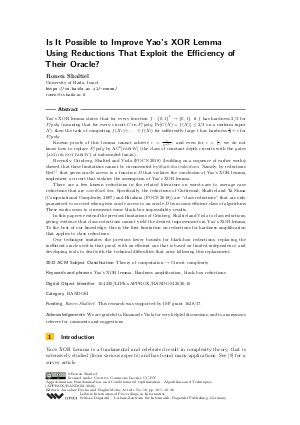LIPIcs.APPROX-RANDOM.2020.10.pdf
- Filesize: 0.64 MB
- 20 pages

 Creative Commons Attribution 3.0 Unported license
Creative Commons Attribution 3.0 Unported license




Feedback for Dagstuhl Publishing